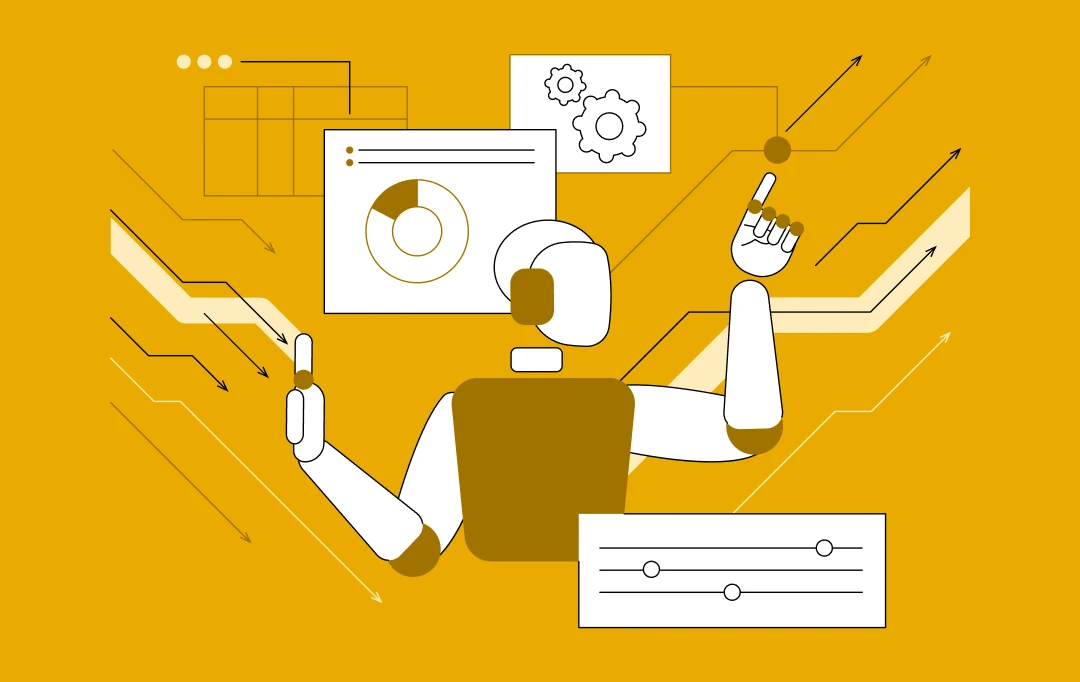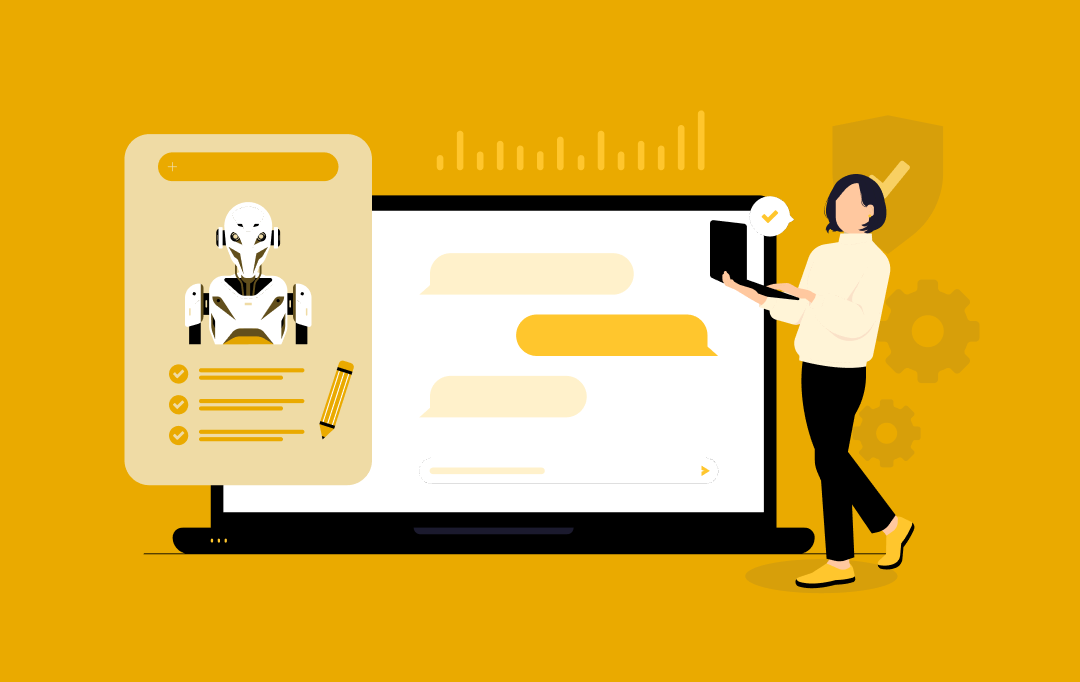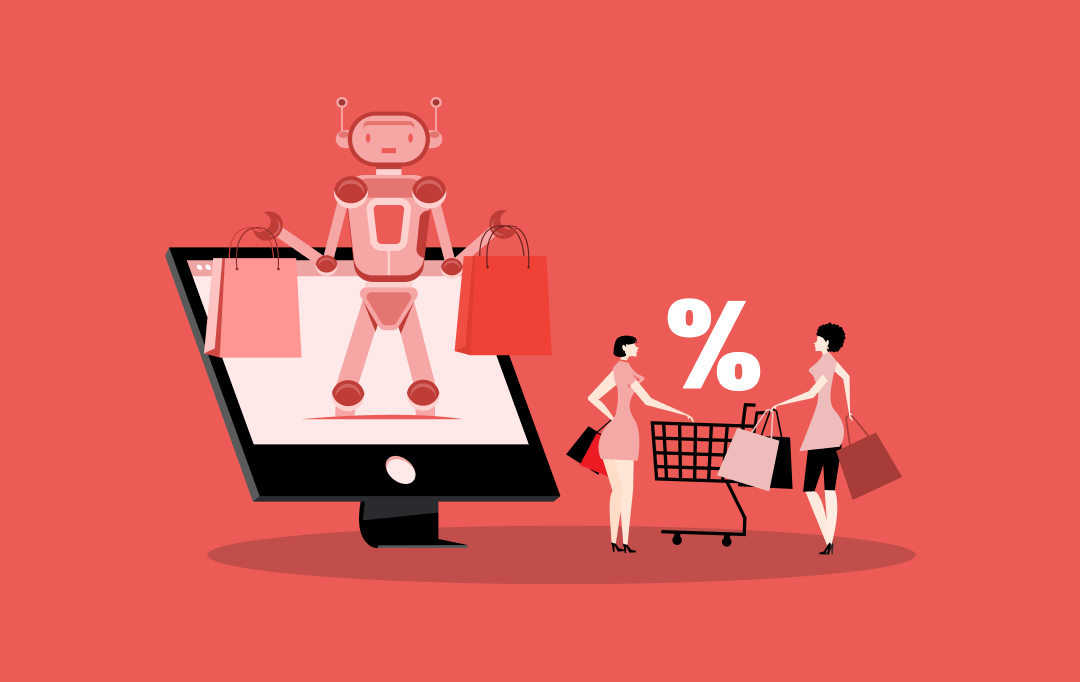- What is data labeling?
- Challenges in data labeling
- Cost in terms of time & effort
- Inconsistency
- Domain expertise
- Imperfections
- Approaches to data labeling
- Inhouse data labeling
- Crowdsourcing
- Outsourcing
- Machine-based
- How does data labeling work?
- Data collection
- Data annotation
- Quality assurance
- Model training & testing
- Industry-wise use cases for data labeling
- Computer Vision (CV)
- Natural language processing (NLP)
- Overview of the AI data labeling market
- Labeling data with Appinventiv
- Wrapping Up!
Data is the new wealth for today’s businesses. With technologies such as artificial intelligence progressively taking over most of our day-to-day activities, the right usage of any data has been influencing society positively. By segregating and labeling data efficiently, ML algorithms can discover the issues and provide practical, and relevant solutions.
With the help of data labeling, we teach the machine various techniques and input the information in various formats for them to behave “smart”. The science behind data labeling involves a whole lot of homework in the form of annotating or labeling the datasets with multiple variations of the same information. Although the final outcome surprises and eases our day-to-day life, the labor behind the same is immense and dedication commendable.
What is data labeling?
In machine learning, the quality and type of input data determine the quality and type of output. The quality of data used to train the machine augments the accuracy of your AI model.
In other words, data labeling is a process to train a machine to find the differences and similarities between the unstructured or structured data sets by labeling or annotating them.

Let us understand this with an example. To train the machine that red light is the sign to stop, you are required to tag all the red lights in various pictures for the machine to understand the signal. Based on this, AI creates an algorithm that will read the red light as a stop signal in every given scenario. Another example is that music genres can be segregated with multiple datasets under the labels jazz, pop, rock, classical, and more.
Challenges in data labeling
Any new changes/advancements in technology or structure bring along its benefits and challenges. It is no different for data labeling. While data labeling can drastically decrease the time for scaling a business, it comes with a cost. Let us dwell on some of the challenges that data labeling brings along.
Cost in terms of time & effort
It is a challenging task in itself to get the niche-specific data in huge quantities. Manually adding tags for each item only adds to the already time-consuming task. If the project is handled in-house, most of the project time is spent on data-related tasks like collection, preparation, and labeling of data.
To manage these tasks effectively, so that you get the work right on the first go, you will need expert labelers with this specific expertise. This is also an expensive undertaking, which makes it costly, not just in terms of time but also in money.
Inconsistency
Annotators with different expertise may have different labeling criteria. Consequently, there is a high possibility of inconsistent tagging. Having said that, when several people label the same data set, data accuracy rates will be much higher.
Domain expertise
For specific industries, you will feel the need of hiring labelers with specific domain expertise. For example, to build an ML app for the healthcare industry, annotators without relevant domain expertise will find it very challenging to tag the elements correctly.
Imperfections
Any repetitive job done by humans is prone to errors. Whatever expertise level the human labeler might have, manual tagging will always have the scope of imperfection. Ensuring zero errors is next to impossible as the annotators have to deal with large sets of raw data for labeling.
Approaches to data labeling
As mentioned above, data labeling is a time-consuming task that requires an eye for detail. Based on the problem statement, the amount of data that is to be tagged, the complexity of data, and the style, the strategy applied to annotate data will vary.
Let’s review various approaches that your company can opt for based on the financial resources and available time.
Inhouse data labeling
Based on the industry type, time in hand to complete the given AI project, and the availability of required resources, the data label process can be performed in-house by the organizations.
Pros:
- High accuracy
- High-quality
- Simplified tracking
Cons:
- Time-consuming/slow
- Require extensive resources
Crowdsourcing
Sourcing data sets that are labeled by freelancers are available on various crowdsourcing platforms. This method can be used for annotating generalized data like pictures.
The most famous example of data labeling through crowdsourcing is Recaptcha. The user is asked to identify specific types of images to prove that they are humans. These are verified based on the inputs given by other users. This acts as a database of labels for an array of images.
Pros:
- Quick and easy
- Cost-effective
Cons:
- Cannot be used for data that requires domain expertise
- Quality is not guaranteed
Outsourcing
Outsourcing can act as a midway between in-house data labeling and crowdsourcing. Hiring third-party organizations or individuals with domain expertise can help organizations with all – long-term and short-term projects.
Pros:
- Optimal for high-level temporary projects
- Third-party outsourcing companies provide vetted staff
- Provides both pre-built and custom data labeling tools as per your business needs
- Can get the option of niche-specific data labeling experts
Cons:
- Managing the third party can be time-consuming
Machine-based
One of the latest forms of data labeling and annotation that is widely used and accepted by industries is machine-based annotation. Automating the data labeling process with the help of data labeling software, reduces human intervention and increases the speed at which labeling can be done. With the technique called active learning, data can be tagged based on which the tags can be added to training datasets automatically.
Pros:
- Quicker data processing and labeling
- Involves lesser human intervention
Cons:
- Although better quality but not at par with human tagging
- In case of errors, human intervention is still required

How does data labeling work?
Based on your business needs, you may choose the approach that suits your requirements best. However, the data labeling process works in the following order chronologically.
Data collection
The base of any machine learning project is data. Collecting the right amount of raw data in various formats comprises the first step of data labeling. The collection of data can be of two forms – one that the company has been collecting internally, and the other, that is collected from external sources that are publicly available.
Being in the raw form, this data requires cleaning and processing before creating the labels for the datasets. This cleaned and preprocessed data is then fed to the model for training. The larger and more diversified the data is, the more accurate the results will be.
Data annotation
Once the data is cleaned, the domain experts go through the data and add labels by following various data labeling approaches. The meaningful context is attached to the model that can be used as ground truth These are the target variables like images that you want the model to predict.
Quality assurance
The success of ML model training is highly dependent on the quality of data that should be reliable, accurate, and consistent. To ensure these precise and accurate data labels, there must be regular QA checks in place. With the use of QA algorithms like the Consensus and Cronbach’s alpha test, the accuracy of these annotations can be determined. Regular QA checks greatly contribute to the accuracy of results.
Model training & testing
Performing all the above steps only makes sense if the data is tested for accuracy. Inputting the unstructured dataset to see if it delivers the expected results will test the process.
Industry-wise use cases for data labeling
Now that we are familiar with what data labeling is and how it works, let us review the most prominent use cases.
Computer Vision (CV)
This is a subset of AI that enables the machines to derive a meaningful interpretation from the inputs provided in the form of visuals and videos (still images extracted for tagging).
Computer vision annotation can be used in various industries to implement the practical benefits of AI.
- In the automotive industry, labeling images and videos to segment roads, buildings, pedestrians, and other objects will help autonomous vehicles distinguish between these entities to avoid contact in real life.
- In the healthcare industry, disease symptoms can be segmented in an X-ray, MRI, and CT scan. With the help of microscopic images, most critical diseases can be diagnosed at an early stage.
- QR codes, label barcodes, etc. can be used as labels in the transportation and logistic industry to track goods.
Natural language processing (NLP)
This is a subset that enables AI machines to interpret human language and statistics. Deriving meaning from text and speech, the algorithm can analyze various linguistic aspects.
NLP is increasingly used in many enterprise solutions.
- It is commonly used in all industries as an email assistant, autocomplete feature, spell checker, segregating spam and non-spam emails, and much more.
- In the form of chatbots, the basic queries raised by the customers are interpreted and answered without human intervention in real-time. It is predicted that 70% of customer interactions will be managed by chatbots and mobile messaging applications by the year 2023.
- Understanding the negative and positive polarity of the text to capture customer sentiment is being done by data labeling in e-commerce.
Appinventiv has successfully built a social media app for Vyrb which enables users to send and receive audio messages optimized for Bluetooth wearables.
Overview of the AI data labeling market
Data labeling is a flourishing industry that is born from AI technology. As data labeling is largely dependent on accurate data being fed to machine learning, it is bound to grow in the next few years.
The graph below clearly shows that the industry has grown and will continue to grow in the coming years. It is expected to grow at a compound annual growth of 25.6% and reach a market size of USD 8.22 billion by 2028. The graph below shows growth by data type.

An overview of the business verticals that have exploited data labeling is the IT and automotive sectors, which cover over 30% share of the global revenue. With the growth of the healthcare industry, it is expected that data labeling will boom because of the accurate data requirements for efficient AI-based applications in the sector. With the help of image labeling, the retail and e-commerce industries too, have secured a significant market share in the data labeling industry.

Labeling data with Appinventiv
Strategically, companies have been outsourcing data collection and labeling services for building strong machine learning models.
Appinventiv is an ML and artificial intelligence development company that has been helping organizations unlock opportunities with AI-driven solutions for many years now. With almost a decade of experience in transforming businesses, we have delivered many complex AI projects for different industries successfully.
For instance, Appinventiv has successfully automated the banking process for a leading bank in Europe. The automation process helped the bank in improving the accuracy by 50% and the ATM service levels by 92%.
Another example where Appinventiv helped YouCOMM build a revolutionary solution for transforming in-hospital patient communication by providing real-time access to medical help. With a customizable patient message system, patients can easily notify staff of their needs through voice commands, and the use of head gestures.
With our expertise and customer-focused team, we provide generative AI services and data labeling solutions that will help you overcome the challenges, offering you holistic data labeling services based on your specific needs and requirements.
By leveraging the vast array of tools required for tagging and data annotation, Appinventiv can enhance your data training processes to simplify complex models. This allows us to outperform in terms of accuracy of segmentation, classification, and subsequently data labeling that will be quick and easy.
Wrapping Up!
“The power of artificial intelligence is so incredible, it will change society in some very deep ways.” – Bill Gates
Artificial intelligence has the potential of making human life easier thus doing good to society. Its capability of sorting huge quantities of data into meaningful instructions with the help of data labeling has helped industries to advance and grow in leaps.
FAQ
Q. What are the best practices to perfect data labeling?
A. Based on the approach you take for data labeling, there are some best practices that you can follow:
- Ensure that the data gathered is adequate, properly cleaned, and processed.
- Based on the industry, assign the job to domain expert data labelers only.
- Ensure a uniform approach is followed by the team by providing them with the annotation techniques criteria to be followed.
- Follow a maker-checker process by assigning multiple annotators for cross-labeling.
Q. What are the benefits of data labeling?
A. Data labeling helps in providing better clarity on context, quality, and usability to make a precise prediction of the data. This, in turn, helps in improving the data usability of variables in the model.
Q. What are the various elements to consider while shortlisting data labeling companies?
A. There are five parameters to consider when choosing the data label services for machine learning.
- Scalability of the data labeling process
- Data labeling service cost
- Data security
- Data labeling platform


- In just 2 mins you will get a response
- Your idea is 100% protected by our Non Disclosure Agreement.

How to Integrate AI with EHR/EMR Systems for Streamlined Healthcare Operations
Key takeaways: Not adopting AI in EHR/EMR today risks falling behind. AI streamlines EHR workflows, cutting clinical and admin delays. Real-world hospitals are already seeing faster, smarter care with AI. Seamless AI integration needs system checks, data prep, and training. AI in EHR tackles real challenges like bias, cost, and compliance. Custom AI integration costs…

AI Agent-Driven UIs: Replacing App Menus and Buttons
Key takeaways: Challenge: Static menus and buttons also become outdated because people are frustrated by limited, multi-stage navigation. Solution: The AI Agent interacts with the user through a friendly UI that does not require cludgy menus but conversational and context-sensitive navigation. The Way AI Agents Work: AI agents establish a basis of natural language understanding,…

10 Use Cases and Benefits of How AI Agents Are Revolutionizing the Retail Industry
Key takeaways: AI agents in the retail industry are revolutionizing businesses by enhancing customer experience and streamlining operations. From personalized recommendations to predictive analytics, AI offers tangible benefits like increased conversions and reduced costs. AI adoption can lead to scalable growth and a competitive edge in the retail industry. Retailers must consider data strategies, talent…
















